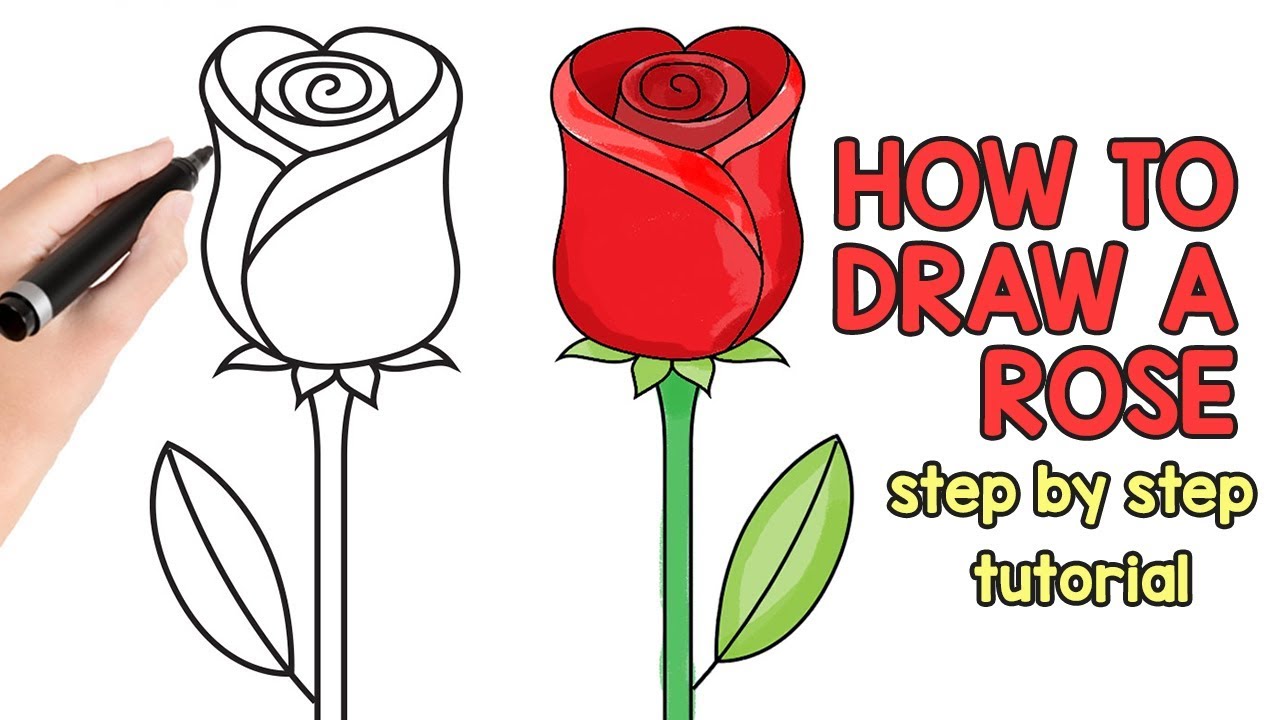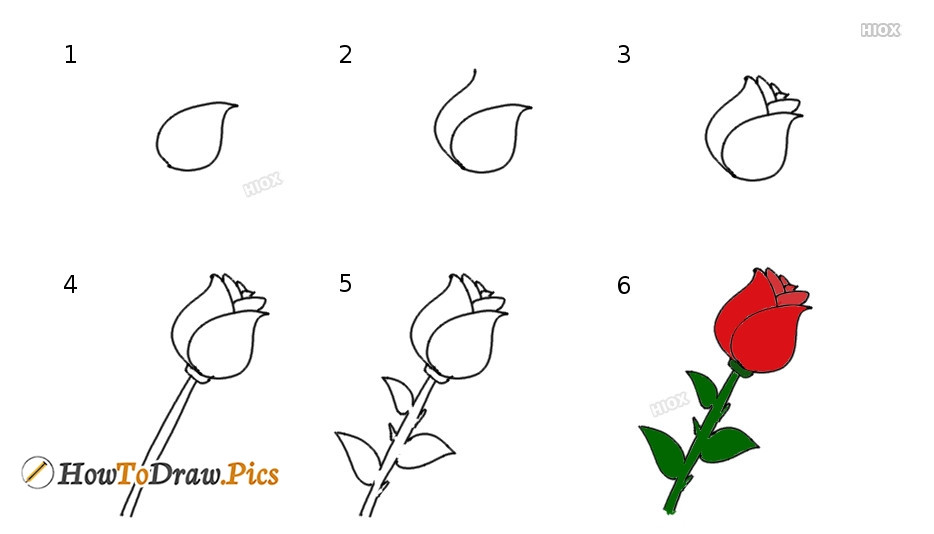Learning how to draw a rose doesn't have to be intimidating, even for beginners. With the right guidance, tools, and techniques, anyone can create stunning and easy drawings of roses that look professional and beautiful. Whether you're a beginner or simply looking to refine your skills, this guide will walk you through every step of the process.
Drawing a rose might seem challenging at first, but breaking it down into simple steps makes it achievable for everyone. Roses are one of the most iconic flowers in art, symbolizing love, beauty, and elegance. Mastering this skill can significantly enhance your artistic journey and open doors to more complex designs.
This comprehensive guide is designed to provide you with all the information you need to create stunning rose drawings effortlessly. From understanding the structure of a rose to mastering shading techniques, we'll cover everything step by step. Let's dive in!
Read also:Facts About Fenty Beauty Unveiling The Secrets Behind The Iconic Brand
Table of Contents
- Introduction to Roses and Their Beauty
- Materials You'll Need for Drawing
- Understanding the Basic Structure of a Rose
- Step-by-Step Process of Drawing a Rose
- Mastering Shading Techniques
- Avoiding Common Mistakes
- Advanced Tips for Stunning Results
- Transitioning to Digital Drawing
- Finding Inspiration for Your Art
- Conclusion and Next Steps
Introduction to Roses and Their Beauty
Roses are not just flowers; they are symbols of deep emotions and timeless beauty. Throughout history, roses have inspired poets, painters, and musicians alike. When you learn how to draw a rose, you're tapping into a tradition of artistic expression that spans centuries.
Why Roses Are Popular in Art
Roses are versatile subjects for artists because of their intricate details and emotional significance. From the delicate petals to the thorny stems, every element of a rose offers an opportunity for creativity. Moreover, roses come in various colors and sizes, providing endless possibilities for artistic exploration.
Studies show that incorporating natural elements into art increases engagement and appreciation. According to research published in Journal of Arts and Humanities, floral art is among the most admired genres worldwide.
Materials You'll Need for Drawing
Before you begin your stunning and easy drawing of a rose, gather the necessary materials. Having the right tools will make your experience smoother and more enjoyable.
Essential Drawing Tools
- Pencils (ranging from 2H to 6B)
- Eraser (kneaded and standard)
- Sketchbook or drawing paper
- Blending tools (tortillons or cotton swabs)
- Reference images of roses
Investing in quality materials is crucial for achieving professional results. For instance, using high-quality graphite pencils allows for better control over shading and detail.
Understanding the Basic Structure of a Rose
To create a stunning and easy drawing of a rose, it's essential to understand its basic structure. Breaking down the flower into simpler shapes makes the process less overwhelming.
Read also:Exploring The Legacy Of Alfalfa From The Little Rascals
Key Components of a Rose
- Petals: These are the most prominent part of the rose. They form a spiral-like pattern around the center.
- Stem: The stem provides support and is often depicted with thorns.
- Leaves: Typically arranged in groups of three or five, leaves add depth and realism to the drawing.
By focusing on these components individually, you can build a realistic representation of a rose step by step.
Step-by-Step Process of Drawing a Rose
Now that you understand the structure of a rose, let's dive into the step-by-step process of creating a stunning and easy drawing.
Step 1: Sketch the Basic Outline
Start by lightly sketching the general shape of the rose using a 2H pencil. Focus on creating a circular or oval shape for the center and adding petals around it.
Step 2: Add Petal Details
Once the basic outline is complete, begin adding individual petals. Pay attention to how they overlap and curl. Use a softer pencil, such as a 2B, for this step.
Step 3: Define the Stem and Leaves
Draw the stem and leaves next. Add thorns along the stem for added realism. Ensure the leaves follow a natural arrangement around the stem.
Step 4: Refine Your Sketch
Erase any unnecessary guidelines and refine the overall shape of the rose. This is the stage where your drawing starts to take form.
Mastering Shading Techniques
Shading is what brings your rose drawing to life. By mastering shading techniques, you can create depth and dimension in your artwork.
Popular Shading Methods
- Hatching: Parallel lines used to create shading.
- Cross-hatching: Crossing lines to add darker tones.
- Stippling: Using dots to create shading effects.
Experiment with different techniques to find what works best for your style. For example, stippling can create a more delicate look, while cross-hatching provides bolder contrasts.
Avoiding Common Mistakes
Even experienced artists make mistakes. Knowing what to avoid can save you time and frustration.
Top Mistakes to Watch Out For
- Overworking the petals: Too much detail can make the drawing look cluttered.
- Ignoring proportions: Ensure all components are proportionate to each other.
- Skipping the shading: Without proper shading, the drawing may appear flat.
By being mindful of these common pitfalls, you can improve your drawing skills significantly.
Advanced Tips for Stunning Results
Once you've mastered the basics, it's time to take your rose drawings to the next level. Here are some advanced tips to help you achieve stunning results.
Enhancing Your Art
- Study real roses to understand their natural form.
- Experiment with color pencils or watercolors for added vibrancy.
- Practice consistently to refine your technique.
Artists like Leonardo da Vinci emphasized the importance of observation. By studying real-life subjects, you can capture their essence more accurately in your drawings.
Transitioning to Digital Drawing
With the rise of digital art, many artists are transitioning from traditional to digital drawing. Learning how to draw a rose digitally opens up new possibilities for creativity.
Benefits of Digital Drawing
- Unlimited undo options for error correction.
- Access to a wide range of brushes and tools.
- Ease of sharing and publishing artwork online.
- Visit botanical gardens to observe real roses.
- Explore art galleries to study masterpieces.
- Join online communities to share and receive feedback.
Tools like Adobe Fresco or Procreate offer features specifically designed for floral art, making the transition smoother for beginners.
Finding Inspiration for Your Art
Art is all about inspiration. Surrounding yourself with sources of inspiration can fuel your creativity and motivation.
Sources of Inspiration
According to a survey conducted by Artists Network, artists who regularly seek inspiration tend to produce higher-quality work.
Conclusion and Next Steps
In conclusion, learning how to create a stunning and easy drawing of a rose is an achievable goal for any beginner. By following the steps outlined in this guide, you can develop the skills necessary to produce beautiful artwork. Remember to practice consistently and seek inspiration from the world around you.
We encourage you to take action by trying out the techniques discussed in this article. Share your creations with the world and inspire others to embark on their artistic journeys. Don't forget to explore other articles on our site for more tips and tutorials.


